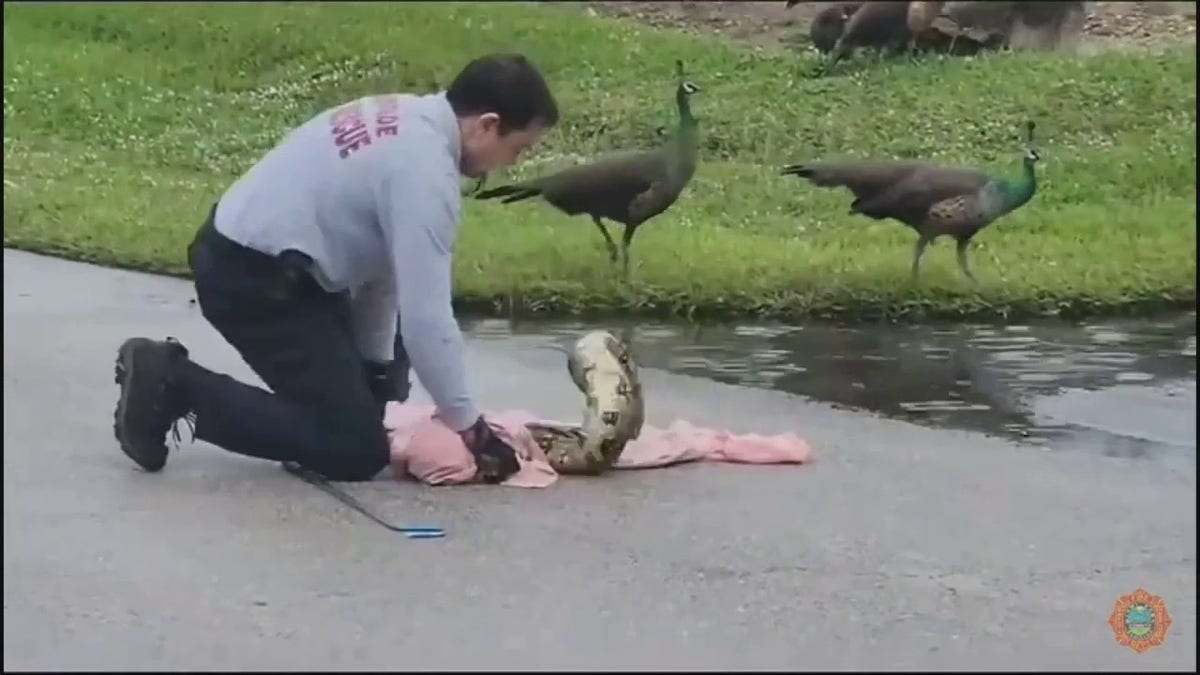Southeast
Florida firefighter captures 40-pound boa constrictor ‘menacing’ peafowl in middle of road: video
A 40-pound boa constrictor was captured in the middle of a road in Florida last week after firefighters got a call about the invasive snake threatening a group of peafowl, officials said.
A distress call had alerted fire officials about a “sizable python” that was “menacing” the peafowl around noon Wednesday in Palmetto, Miami-Dade Fire Rescue said.
Officials said when Lt. Christopher Pecori from the department’s Venom One Response team arrived at the scene, he identified the snake as a red tail boa constrictor, which is a species non-native to Florida.
“The Venom One Response officer promptly headed to the scene and recognized the formidable serpent as an invasive Red Tail Boa Constrictor, measuring about eight feet in length and weighing around 40 pounds,” the department wrote on Instagram.
CALIFORNIA MAN SHOOTS BEAR THAT BIT HIM, HAD ‘STANDOFF’ WITH HIS DOG
The 8-foot, 40-pound red tail boa was “menacing” a group of unsuspecting peafowl in Palmetto, Florida, fire officials said. (Miami-Dade Fire Rescue )
The department released video of the lieutenant “skillfully” capturing the snake in a tarp as the peafowl congregated nearby. Officials said the encounter showcased “the danger [the red tail boa constrictors] pose to local wildlife.”

A member of the Venom One Response team captured the snake using a tarp. (Miami-Dade Fire Rescue )
The invasive snake was removed from the residential area and will be handed over to Florida Fish and Wildlife Conservation Commission (FWC) for “further processing,” fire officials said.
3 COYOTE ATTACKS REPORTED IN PHOENIX; 4-YEAR-OLD AMONG VICTIMS BITTEN
The boa constrictor is native to Central and South America but appears to have been breeding in Florida for at least 10 years, according to the FWC.
The snake was removed from the residential area and given over to wildlife authorities for “further processing,” according to fire officials. (Miami-Dade Fire Rescue )
The University of Florida Department of Wildlife Ecology and Conservation says on its website that the snake was introduced in southern Florida likely as a result of “the unethical and illegal release of pet snakes,” and has established a population in Miami-Dade County,
CLICK TO GET THE FOX NEWS APP
The red tail boa can give birth to 15 to 40 live young. The species eats lizards, birds, and mammals both on the ground and in trees, according to the FWC.
Read the full article from Here